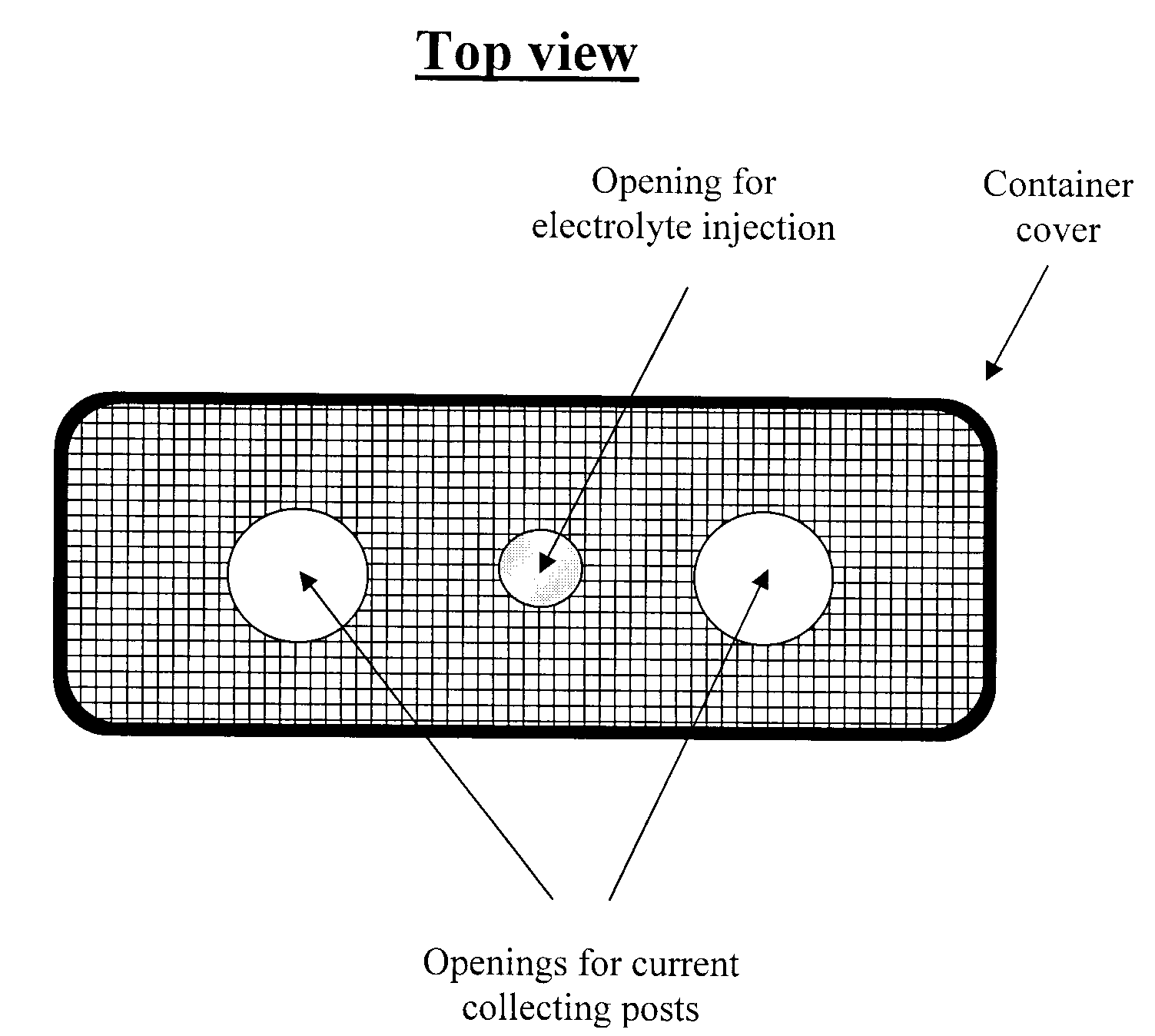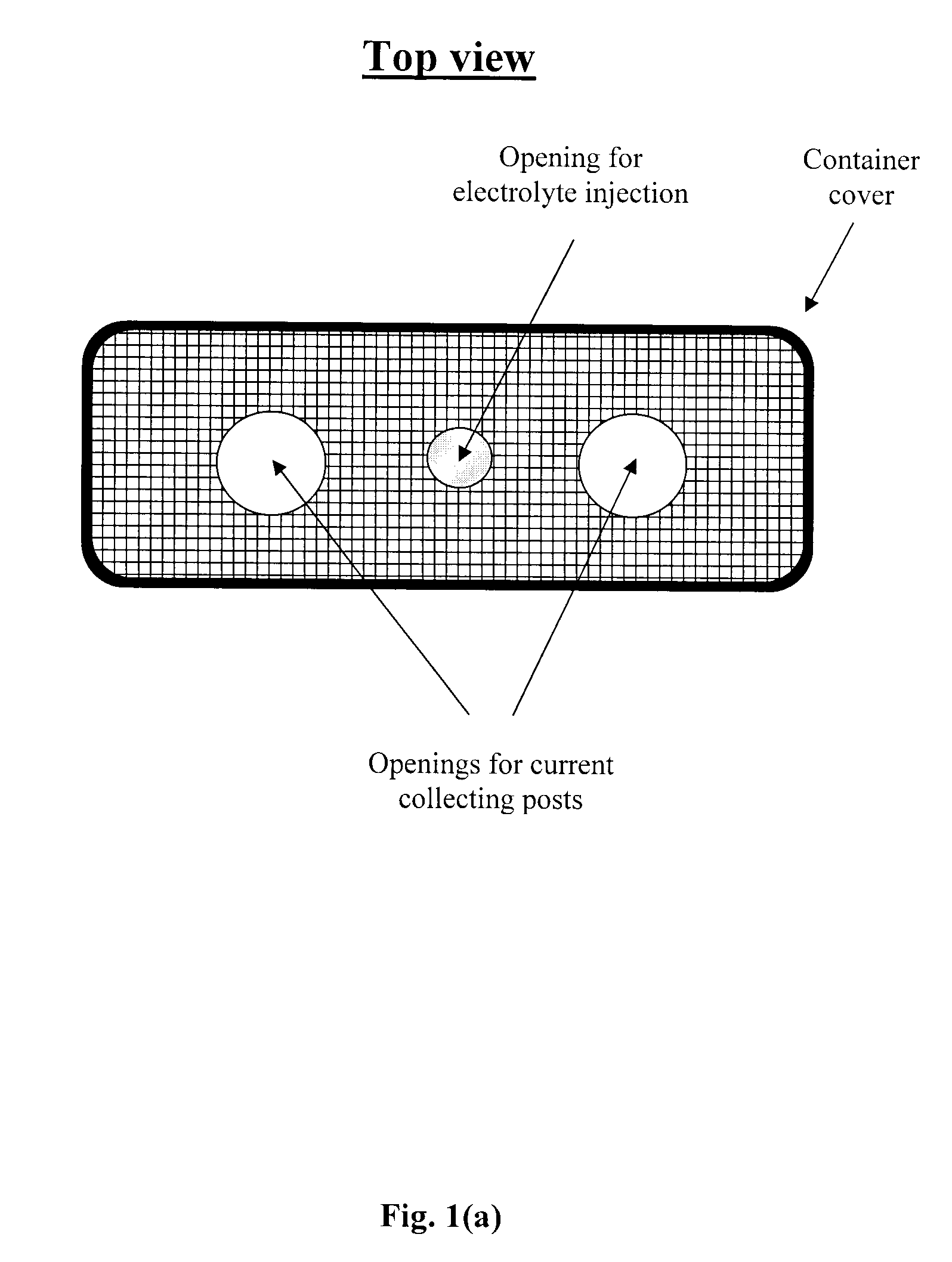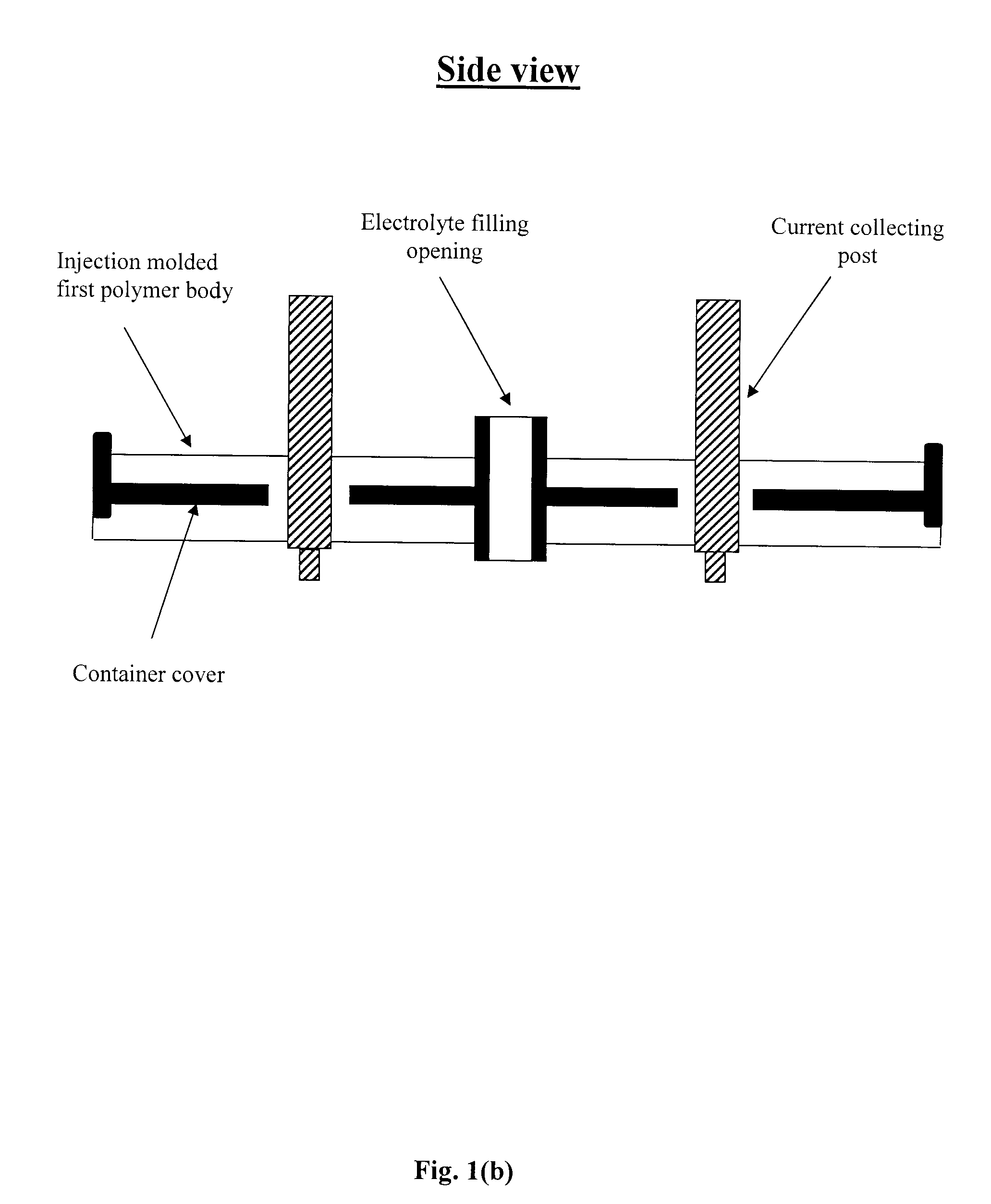Current collecting post seal for high durability lithium-ion cells
a lithium-ion battery, current collecting post technology, applied in the direction of cell components, cell components, jackets/cases materials, etc., can solve the problems of deterioration, oxygen, water molecules or other gases or liquids not being able to be easily detected, and the interface cannot provide a long diffusion path for oxygen, water molecules or other gases or liquids
- Summary
- Abstract
- Description
- Claims
- Application Information
AI Technical Summary
Benefits of technology
Problems solved by technology
Method used
Image
Examples
example i
The Basic Form of the Present Invention
[0015]FIG. 1(a) shows a top view of a cover for a top opening of a battery container. For clarity in describing the method of the invention, step by step assembly of the cover is shown in the form of side views in FIGS. 1(b) through FIG. 1(f).
[0016]FIG. 1(b) shows the first step in fabricating the cover assembly. A first polymer body is disposed on a top and bottom surface of the container cover through an injection molding process. Current collecting posts which extend through openings in the cover are stabilized through the injection molding process as the polymer fills a gap between the cover and the current collectors.
[0017]FIG. 1(c) shows a top flange and a bottom flange disposed on the conducting posts. The flanges are forced toward each other, with the injection molded first polymer body sandwiched between. The top and bottom flanges are fused to the injection molded polymer. This step is extremely important and is preferably carried out...
example ii
An Alternative Form of Assembly of the Present Invention
[0039]Referring to FIGS. 2(a)-2(c) a current collecting post, a top flange, a bottom flange and a cover are pre-assembled via mechanical assembling or welding. The current collecting posts, top flanges, and bottom flanges are assembled relative to the cover using a mold, in the configuration shown in FIG. 2(a), and the polymer injection molding is conducted on the overall assembly. The resultant cover becomes a monolith as shown in FIG. 2(b). The top flanges are then sealed to the current collecting posts followed by filling a second polymer body on top of the injection molded first polymer body as shown in FIG. 2(c). Since high pressure is used during the injection molding process, a condition similar to forcing the top and bottom flanged together, as in the first method of fabrication described above, can be achieved via the present injection molding process. It should be noted that the sealing between the top flange and the ...
example iii
An Extended Form of the Present Invention
[0043]A cell cover may contain not only the openings for positive and negative current collecting posts but also additional openings for electrolyte filling or safety venting. One more example is given here for describing the design and method for making a cell cover that contains current collecting posts, an electrolyte filling opening, as well as a safety vent.
[0044]For clarity, the method described in Example II is utilized in the present example. FIG. 3(a) shows a cover containing a notch around the opening for electrolyte filling. The notch having a reduced metal thickness is designed to be a safety vent that breaks outward when internal cell pressure is built up undesirably. A current collecting post, a top flange and a bottom flange are pre-assembled via mechanical assembling or welding. The current collecting posts, top flanges, and bottom flanges are assembled relative to the cover using a mold, in the configuration shown in FIG. 3(a...
PUM
| Property | Measurement | Unit |
|---|---|---|
| diameter | aaaaa | aaaaa |
| size | aaaaa | aaaaa |
| distance | aaaaa | aaaaa |
Abstract
Description
Claims
Application Information
 Login to View More
Login to View More - R&D
- Intellectual Property
- Life Sciences
- Materials
- Tech Scout
- Unparalleled Data Quality
- Higher Quality Content
- 60% Fewer Hallucinations
Browse by: Latest US Patents, China's latest patents, Technical Efficacy Thesaurus, Application Domain, Technology Topic, Popular Technical Reports.
© 2025 PatSnap. All rights reserved.Legal|Privacy policy|Modern Slavery Act Transparency Statement|Sitemap|About US| Contact US: help@patsnap.com



